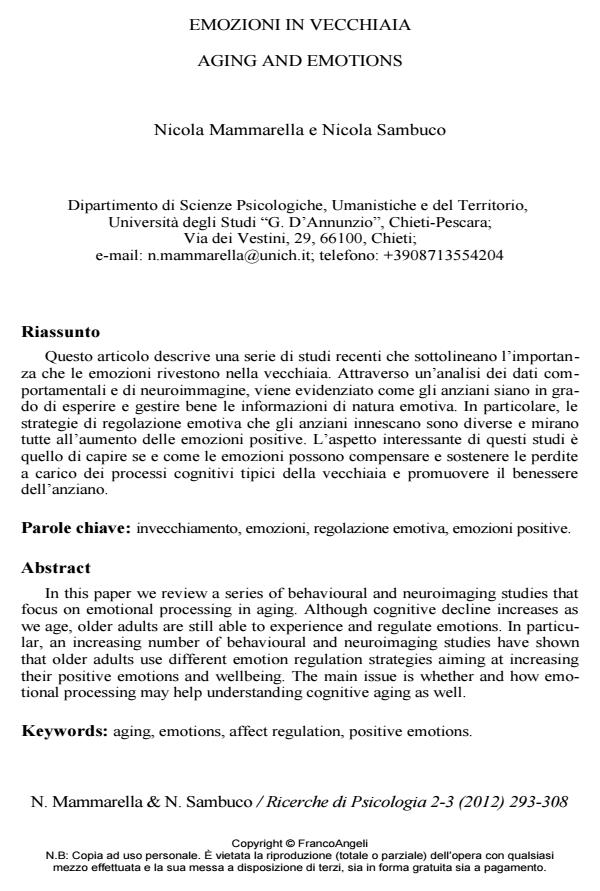Emozioni in vecchiaia
Titolo Rivista RICERCHE DI PSICOLOGIA
Autori/Curatori Nicola Mammarella, Nicola Sambuco
Anno di pubblicazione 2013 Fascicolo 2012/2-3
Lingua Italiano Numero pagine 16 P. 293-308 Dimensione file 238 KB
DOI 10.3280/RIP2012-002010
Il DOI è il codice a barre della proprietà intellettuale: per saperne di più
clicca qui
Qui sotto puoi vedere in anteprima la prima pagina di questo articolo.
Se questo articolo ti interessa, lo puoi acquistare (e scaricare in formato pdf) seguendo le facili indicazioni per acquistare il download credit. Acquista Download Credits per scaricare questo Articolo in formato PDF

FrancoAngeli è membro della Publishers International Linking Association, Inc (PILA)associazione indipendente e non profit per facilitare (attraverso i servizi tecnologici implementati da CrossRef.org) l’accesso degli studiosi ai contenuti digitali nelle pubblicazioni professionali e scientifiche
Questo articolo descrive una serie di studi recenti che sottolineano l’importanza che le emozioni rivestono nella vecchiaia. Attraverso un’analisi dei dati comportamentali e di neuroimmagine, viene evidenziato come gli anziani siano in grado di esperire e gestire bene le informazioni di natura emotiva. In particolare, le strategie di regolazione emotiva che gli anziani innescano sono diverse e mirano tutte all’aumento delle emozioni positive. L’aspetto interessante di questi studi e quello di capire se e come le emozioni possono compensare e sostenere le perdite a carico dei processi cognitivi tipici della vecchiaia e promuovere il benessere dell’anziano.
Parole chiave:Invecchiamento, emozioni, regolazione emotiva, emozioni positive.
Nicola Mammarella, Nicola Sambuco, Emozioni in vecchiaia in "RICERCHE DI PSICOLOGIA " 2-3/2012, pp 293-308, DOI: 10.3280/RIP2012-002010